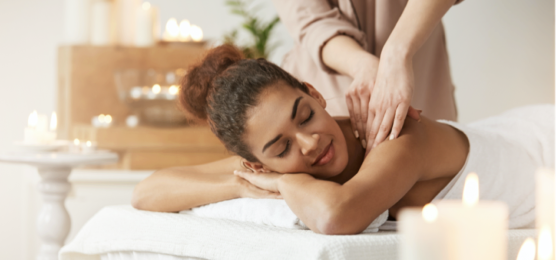Is There Such Thing as a Massage for Depression?
Question:
A few years ago I was diagnosed with depression. More recently I’ve made an effort to live more organically, and I’ve become interested in holistic health practices. Many practitioners discuss massage therapy as a way to treat depression. I’ve been on anti-depressants for years, but I would love to stop taking these drugs (or at least be able to decrease my dosage). Is there such a thing as massage for depression?
Answer:
Depression can take its toll on you mentally and physically, and regular massage therapy may help promote relaxation and an overall feeling of well-being.[1] Depression is a serious problem in the US, affecting an estimated 1 in 10 adults, according to the CDC.[2] The CDC recommends that you follow a collaborative course of treatment, involving your medical doctor, mental health specialists, and other health care providers – which may include a massage therapist – to manage your depression.
The American Massage Therapy Association takes the position that regular massage therapy can reduce symptoms of depression.[3] However, there haven’t been a lot of clinical studies in the area, and those that have studied the effectiveness of massage for depression have mixed results.[4] Overall, though, a meta-analysis of several studies concluded that massage therapy is significantly associated with reduced symptoms of depression. Some trials showed only a moderate effect, but a positive effect was demonstrated across the board.[5]
A 60-minute therapeutic massage may decrease the levels of the stress hormone cortisol in your body by as much as 30 percent. The same massage could also increase your body’s levels of serotonin by a similar percentage.[6] Serotonin is a mood booster, and elevated levels of this hormone help you combat feelings of sadness.[7] These changes typically are short-term, and may only last a few hours. With regular sessions, however, you may start to notice more long-term changes.
A classical or traditional Swedish massage is typically recommended for depression. This is considered the most common type of massage. Your massage therapist uses gentle, fluid movements to massage your body with long, gliding strokes. Before your massage, talk to your therapist about your symptoms and your current treatment for depression – it will help them create an effective treatment plan.
For consistent and longer lasting results, schedule a session once every week to 10 days for several months. Remember that massage therapy is meant to complement your current treatment – not replace it. If you notice significant improvement after a month or two of massage therapy, you can talk to your doctor about decreasing the dosage on your medications.
References:
[1] Western Journal of Medicine: “Massage therapies” https://www.ncbi.nlm.nih.gov/pmc/articles/PMC1071543/
[2] American Massage Therapy Association: “Massage Can Reduce Symptoms of Depression” https://www.amtamassage.org/approved_position_statements/Massage-Can-Reduce-Symptoms-of-Depression.html
[3] Id.
[4] The Journal of Clinical Psychiatry: “Treatment effects of massage therapy in depressed people: a meta-analysis” https://www.ncbi.nlm.nih.gov/pubmed/20361919
[5] Id.
[6] Mayo Clinic Health System: “Can massage relieve symptoms of depression, anxiety and stress?” https://mayoclinichealthsystem.org/hometown-health/speaking-of-health/can-massage-relieve-symptoms-of-depression-anxiety-and-stress
[7] Id.
You Might Be Interested In These, As Well:
Running can help with depression, as well. Though too much running might cause you to need a massage for hamstring tendinopathy.
Migraines can make life impossible. Learn how massage can help with your migraines.
Ready to book your massage?

